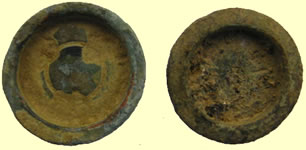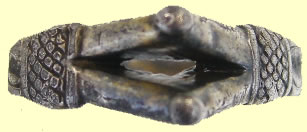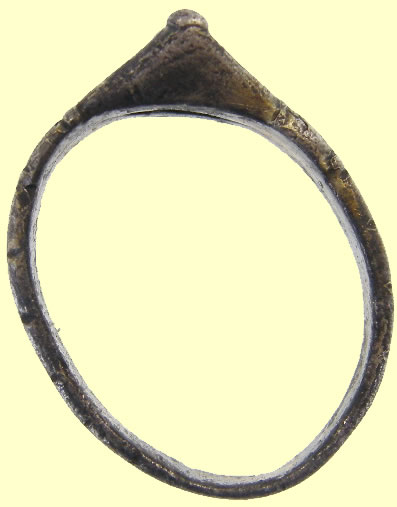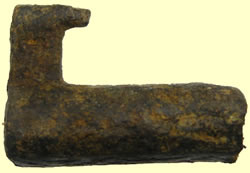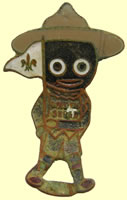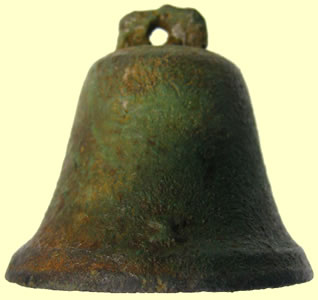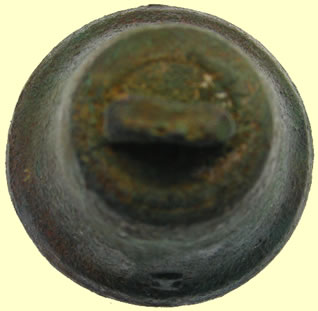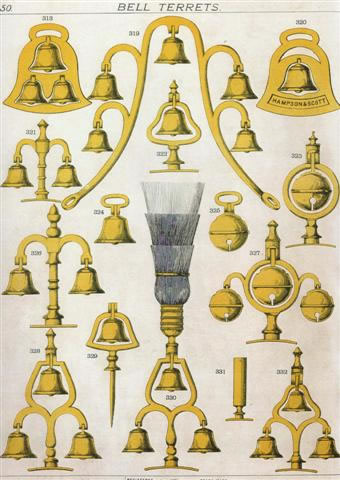

Metal detecting holidays in England with the World's most successful metal detecting club.
Twinned with Midwest Historical Research Society USA
2013 Sept Finds Page 2 |
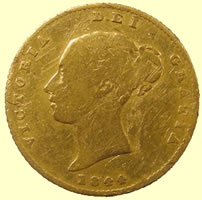 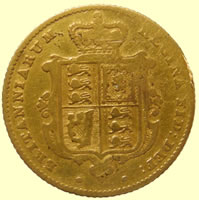 |
|||
| 1844 Victoria milled gold half sovereign | |||
|
|||
2000 BC bronze flat axe - very rare find for Essex 47.46mm L x 35.71mm W |
|||
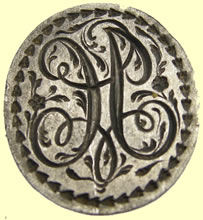 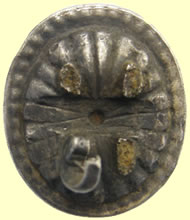 |
|||
| Large Georgian silver seal brooch | |||
|
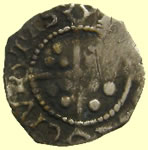 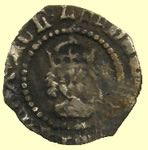 |
||
| Medieval (1250-1500) cast copper alloy gilded bar mount. | Unknown NEW type - mullet by crown 1509 - 26 Henry VIII hammered silver farthing - Mullet by crown - Long Cross Fourchee, brush hair - Portcullis initial mark - single arched crown Obv HENRIC DI GRA AGL' Rev CIVI/TAS/ **** |
||
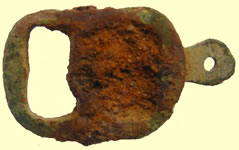 |
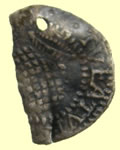 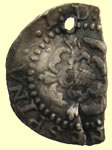 |
||
Post medieval cast copper alloy rectangular two piece buckle C1650-1725 |
1603 James 1st hammered silver penny | ||
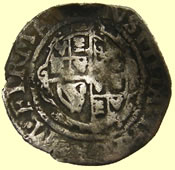 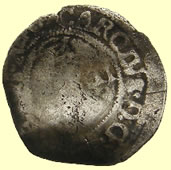 |
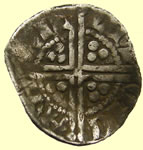 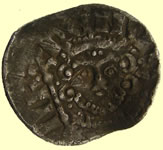 |
||
| 1625 Charles 1st hammered silver half groat | 1247Henry III hammered silver voided long cross penny - Class 5 Obv HENRICVS REX III Rev WIL/LEMONC/ANT - Moneyer Willem of Canterbury mint |
||
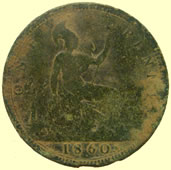 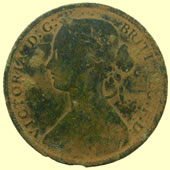 |
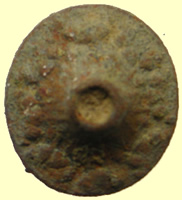 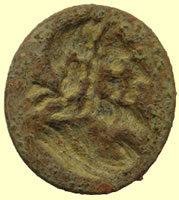 |
||
| Great shappe 1860 Victoria milled copper penny | Georgian fob seal | ||
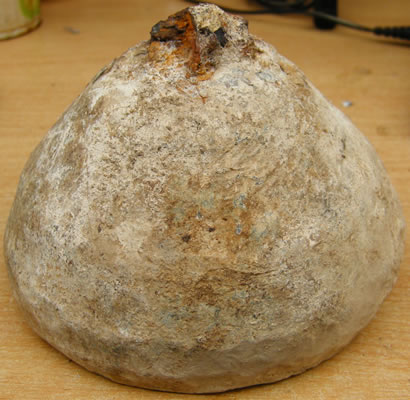 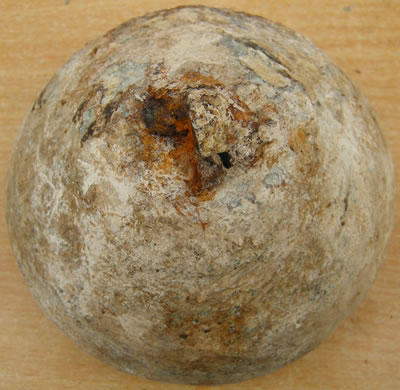 |
|||
A total monster relic !! Biggest relic we have ever dug - This weight weighs 18.8 Lbs and is 139mm dia x 102 mm H It is a steelyard weight - probably medieval - need to do some research on PAS |
|||
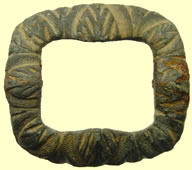 |
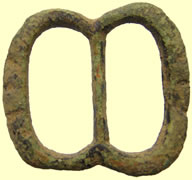 |
  |
|
Post-medieval copper-alloy buckle frame C AD 1650-1720 |
Post Medieval cast copper alloy single loop buckle frame. 1500-1650 AD |
Boys Brigade badge | |
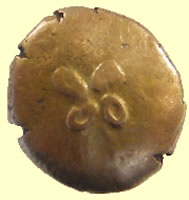 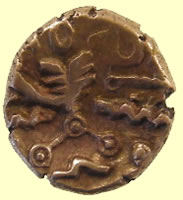 |
|||
This could be a 50BC Cantii Celtic gold qtr stater - sent to CCI for recording and confirmed ID 11.19mm, 1.40g Just found Jim's Celtic in my new Chris Rudd book and it is classed as Extremely rare - only 6 to 15 exist |
|||
 |
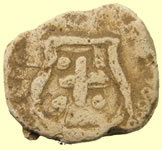 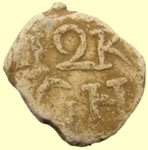 |
||
| Military button - not checked ref books yet | Post medieval lead bale seal | ||
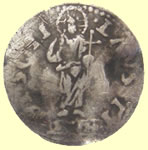 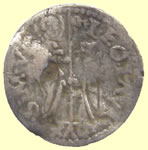 |
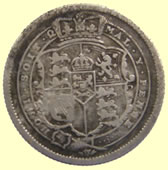 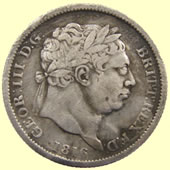 |
||
1501-1521). Rev: LAVS TIBI SOLI (Thee Alone be Praised). Haloed figure of Christ holding a cross. Obv: LE LAV DVX S M V (Leonardo Lauredan, Doge. St Mark of Venice.) Doge kneeling before Saint Mark. |
1816 George III milled silver shilling | ||
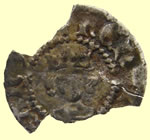 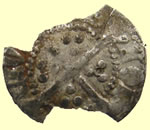 |
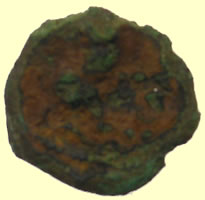 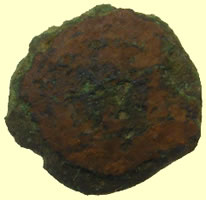 |
||
1422- 61 Henry VI hammered silver half penny - plain cross - Annulet issue Annulets in oppposing quadrants on rev CIVI Obv hENIC ***REX ANG** Rev CIVI/TAS/LON/DON - London mint |
Celtic bronze unit - currently soaking to try and clean up for ID | ||
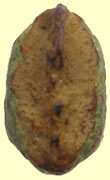 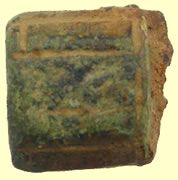 |
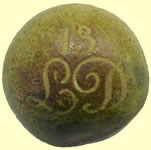 |
||
| Medieval knife pommel | Rare 13th Light dragoon guard button 'Still unrecorded, but I have it in my book as the below' 13th Light Dragoons |
||
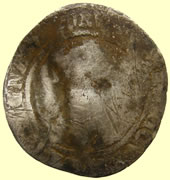 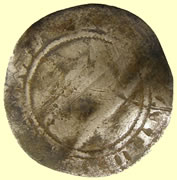 |
 |
||
| 1603 Irish James 1st hammered silver sixpence | 18thC Royal navy silver button | ||
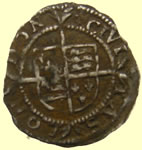 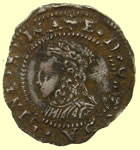 |
|
||
| 1560-1 Elizabeth 1st hammered silver penny | 17thC coppper ring inscribed MARY | ||
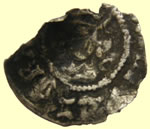 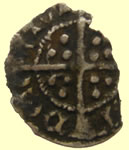 |
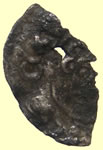 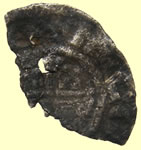 |
||
1399-1413 Henry VI hammered silver hallf penny - light coinage - annulet to right of neck Obv + HENRICxREXxANGL Rev CIVI/TAS/LON/DON - London mint |
Medeival hammered silver short cross penny | ||
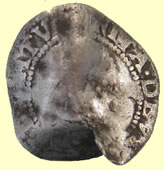 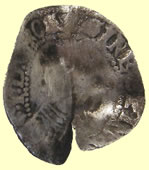 |
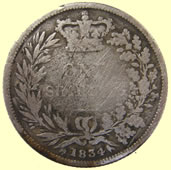  |
||
| 1603 James 1st hammered silver half groat | 1834 William III milled silver shilling | ||
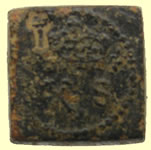 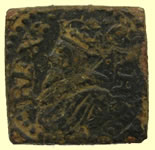 |
|||
| Stunning 1625 Charles 1st double crown coin weight | |||
|
|||
Spectacular condition 1stC Celtic cosmetic woad grinder Cast copper alloy cosmetic grinder (also known as woad grinder) of late Iron Age to early Roman date - 1stC BC - mid 1stC AD Best one I have ever seen dug especially with complete hanging loop |
|||
Legend - X CLDVTIOEIS
|
|||
| 13thC seal matrix | |||
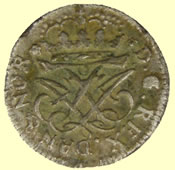 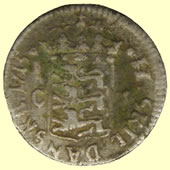 |
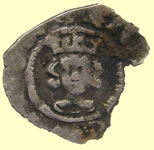 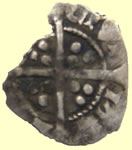 |
||
1715 Milled silver Denmark coin - researching it
Frederick IV (1699-1730), 2 skilling 1715 |
1422-61 Henry VI hammered silver farthing Obv hEN *** Obv CIVI/TAS/L*** London mint
|
||
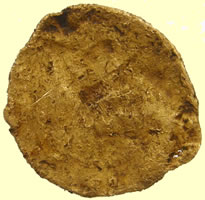 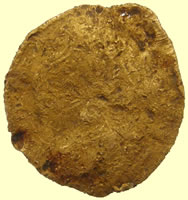 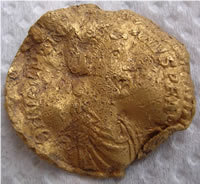 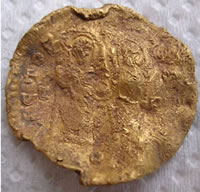 |
|||
4th/5thC Roman gold coin - this is the 3rd 'sandblasted' looking example we have found 3.8g, 19.89mm |
|||
 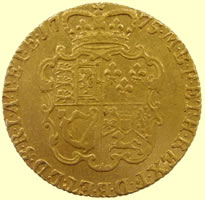 |
|||
1775 George III milled gold full guinea (21 shllings, 156 pence) 24.64mm,8.41g |
|||
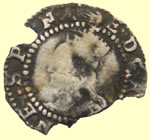 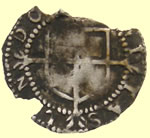 |
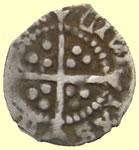 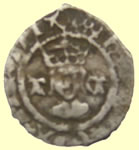 |
||
| 1590-2 Elizabeth 1st hammered silver penny - Hand mintmark | 1533- 56 Henry VIII hammered silver half penny - Wheel mint mark - 2e Archbishop Thoman Cranmer - TC at sides of bust OBV hxDxGxROSAxSIExSPIA Rev CIVI/TAS/CAN/TOR - Casnterbury mint |
||
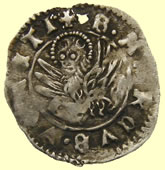 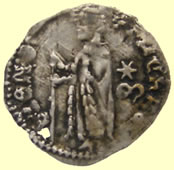 |
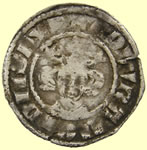 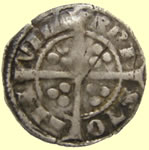 |
||
Venetian Soldino issued by Doge Michele Steno (1400-1413). Doge standing left, holding banner, * / m in right field |
1344 Edward III hammered silver florin penny - Cross 2 Obv EDWR ANGL DNS HYB Rev VILL/BRI/STO/LIE - Bristol mint
|
||
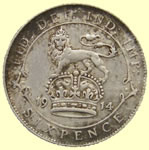 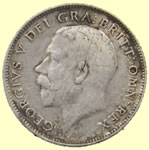 |
 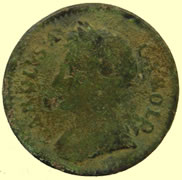 |
||
| 1914 George V milled silver sixpence | Stunning condition 1675 Charles II milled copper half penny | ||
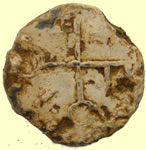 |
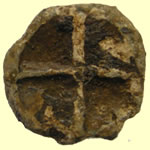 |
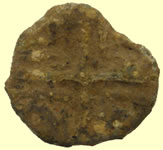 |
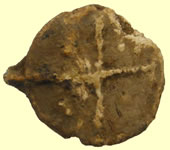 |
| Post medieval crossed keys bale seal | 15thC lead token | 15thC lead token | 15thC lead token |
 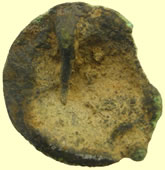 |
 |
 |
|
| 1500- 1700 mount | 16thC Tudor clothing fastener | 1770 Royal navy button | |
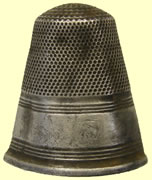 |
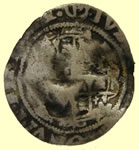 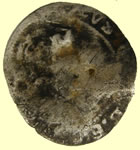 |
||
| Georgian silver thimble | 1625 Charles 1st hammered silver penny | ||
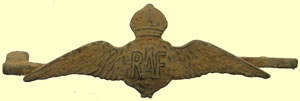 |
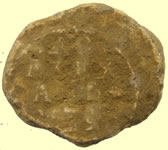 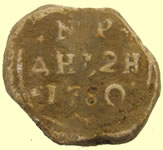 |
||
| WWII Royal Airforce badge | 1780 Russian lead bale seal | ||
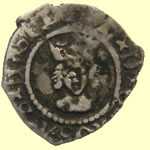 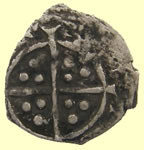 |
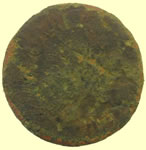 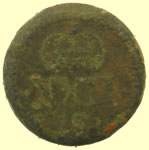 |
||
1526- 44 Henry VIII hammered silver half penny - Single arched crown - 'Brush' hair OBV hxDxGxROSAxSIExSPIA Rev CIVI/TAS/LON/DON - London mint |
1604-19 James 1st Unite gold coin weight - 2nd coinage revalued Obv Crown XXII (22 shillings) |
||
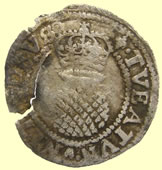 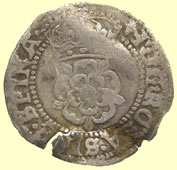 |
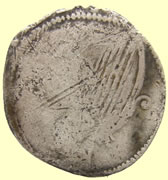 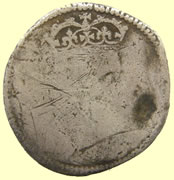 |
||
| 1604-5 James 1st hammered silver half groat - Lis mintmark | 1603 Irish James 1st hammered silver sixpence | ||
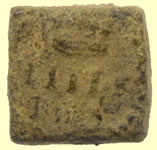 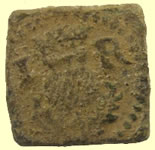 |
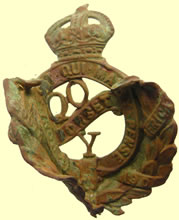 |
||
The thistle identifies the Scottish made thistle crown of James 1st (1603) IIIIs 4d1/2 on reverse below crown Weights have I R to sides of thistle |
20thC Dorset Regiment cap badge | ||
 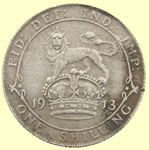 |
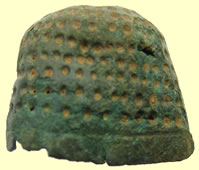 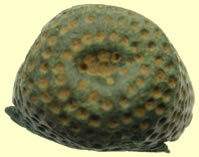 |
||
| 1913 George V milled silver sixpence | 15thC thimble | ||
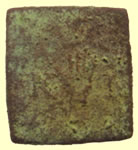 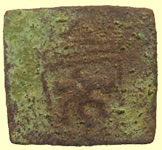 |
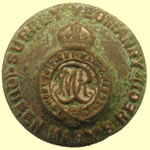 |
||
| 1576-79 Antwerp hand coin weight - KI is an unknown maker | Surrey Yeomanry - Queen Mary's regiment In 1901 the Regiment was granted the title Princess of Wales's which was changed to Queen Mary's when George V became the King |
||
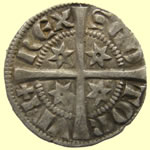 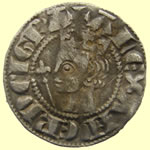 |
|||
This is the best Scottish silver I have seen dug,stunning coin 1249-1286 Scottish Alexander III hammered silver penny Rev ALEXANDER DEI GRA Rev REX SCOTORUM + Ref SA31D-280 |
|||
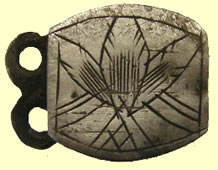 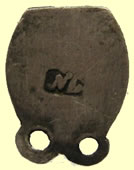 |
 |
||
| Victorian silver clasp | Georgian silver spoon | ||
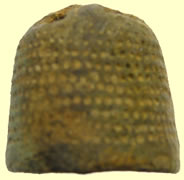 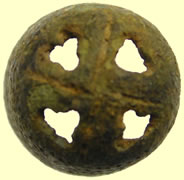 |
 |
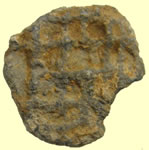 |
|
| Nurnberg Type ll - mid 16thC thimble |
|||
 |
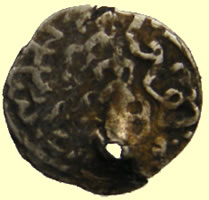 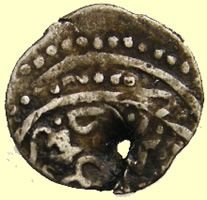 |
||
| 18thC toy cannon | Weird hammered silver coin ?? - checking ref books, Islamic | ||
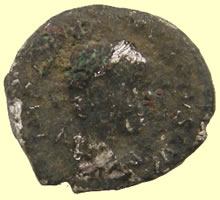 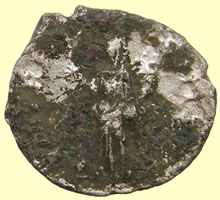 |
|||
2ndC Roman silver coin - cooking to remove crust - sent to Mark Lehman for initial ID You know, I'm sure, that with as few definitive features showing (legend letters, etc) as this piece is exhibiting in its current state, this has got to be a guess no more inherently accurate than thowing darts in the dark, but on the basis of the silhouette of the head and the star in the field next to the standing figure on the reverse, it seems like there is a good chance that this is one of the later Severan emperors - Elagabalus or Severus Alexander. 218-222 & 222-235 respectively. I'll be able to tell you a good bit more, I believe, after this comes out of the cooker. Mark |
|||
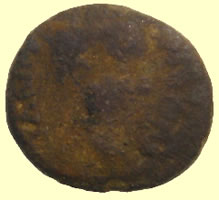 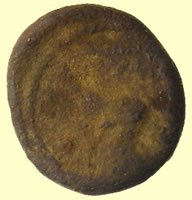 |
|||
| Roman bust type Celtic silver unit - 'cooking' it to remove crust | |||
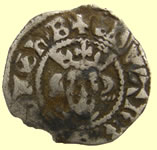 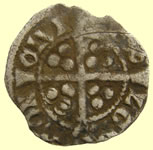 |
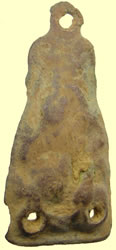 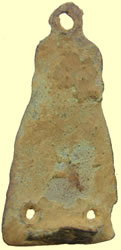 |
||
1344 Edward III hammered silver penny florin penny -Cross 1 Obv EDWARR ANGLE DNS HYB Rev CIVI/TAS/LON/DON - London mint |
c10thC Saxon stirrup mount | ||
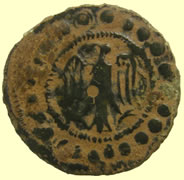 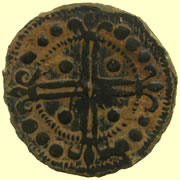 |
|||
Stunning English medieval jetton not in ref books Appears to be the same period and design circa 1280 like the Lions of England type but this has a winged bird of prey on Obv |
|||
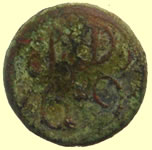 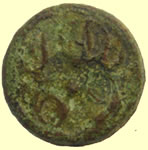 |
 |
 |
|
1770's pattern coin weight - 6 shillings and nine pence ( 81 pence) Obv SD 6.9 Rev SD 6.9
|
Georgian trade weight | Not checked ref books yet for this military button | |
  |
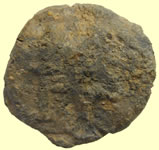 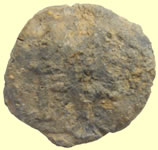 |
||
| 1634 Charles 1st hammered coppper rose farthing | Roman lead token | ||
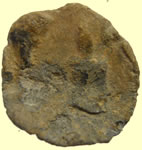 |
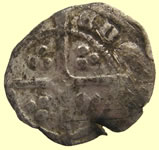 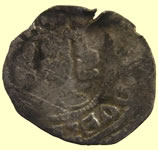 |
||
| 16thC Elizabethan illegal tavern token | 1327 Edward III hammered silver penny - quadrefoil with pellet in centre of reverse cross Archiepiscopal issue Obv DVS*** Rev /EBO/ - York mint |
||
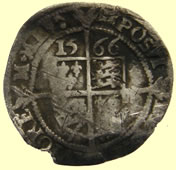 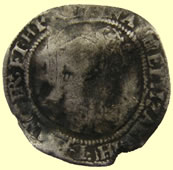 |
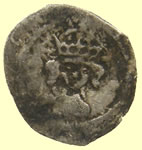 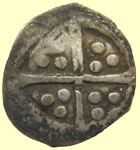 |
||
| 1566 Elizabeth 1st hammered silver 3 pence | 1509 -26 Henry VIII hammered silver half penny - single arched crown | ||
  |
 |
 |
|
1422-61 Henry VI hammered silver half penny - satires by neck Satire leaf issue Obv HENRIC'xREX:ANGL Rev CIVI/TAS/LON/DON - London mint |
17thC mount | Medieval mount | |
 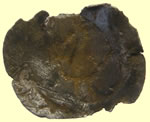 |
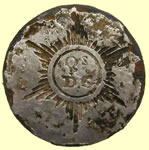 |
||
| Medieval hammered silver long cross penny | 18thC Officers Queens dragoon guards button | ||
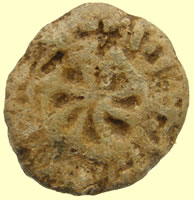 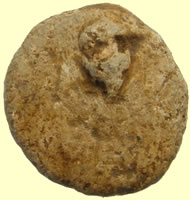 |
|||
| 1260's AD Non Heraldic personal lead seal matrix | |||
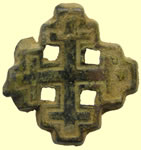 |
|||
Medieval badges Ref Mitchiner p244 939 - 941
|
|||
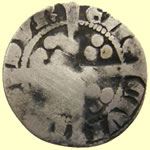 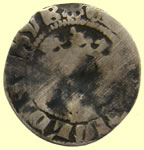 |
 |
||
1307 -1327 Edward II hammered silver penny - Cross Moline- angular backs to letters - Class 11b Obv E *** ANGL DNS HYB Rev CIVI/TAS/DVR/ENE - Durham mint |
18thC toy cannon | ||
 |
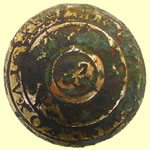 |
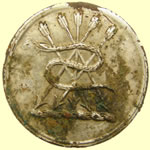 |
|
| Late Medieval/ Early Post-Medieval (15th-early 16th century) cast one-piece copper-alloy mount, convex and cinquefoil in shape | 19thC Royal Yeomanry button | 19thC livery button | |
 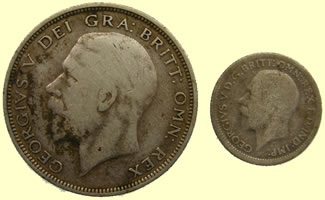 |
|||
| 1932 George V milled silver half crown (30 pence) and 1929 sixpence | |||
 |
 |
 |
 |
Post-medieval copper-alloy buckle frame C AD 1650-1720 |
19thC Chinese cash coin | Early Post-Medieval (1500-1700) copper alloy belt mount in the form of an acorn, | 18thC clog fastener |
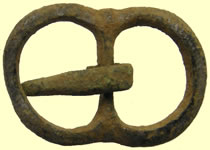 |
 |
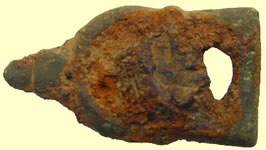 |
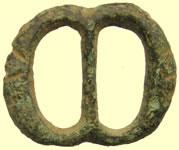 |
Post Medieval cast copper alloy single loop buckle frame. 1500-1650 AD |
Roman lead motorcyclist LOL | Cast copper alloy tapering D-form buckle of 17th century date. AD 1600 - 1700 |
Post Medieval cast copper alloy single loop buckle frame. 1500-1650 AD |
 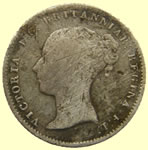 |
  |
||
| 1845 Victoria milled silver groat | 1247 Henry III hammered silver half penny | ||
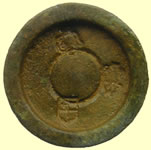 |
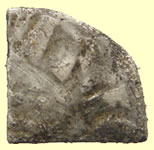 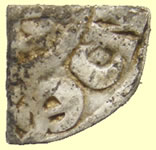 |
||
| 1830's London guildhall trade weight | 1247 Henry III hammered silver qtr penny Rev / NDE/ - London mint |
||
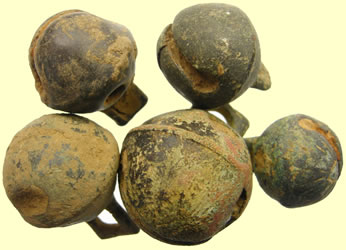 |
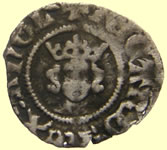 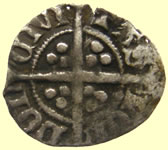 |
||
| Org Stuart's 17thC crotal bell hoard !! | 1377-1399 Richard II hammered silver half penny - Type 1 (i) Obv + RICARD:REX :ANGL Rev CIVI/TAS/LON/DON - London mint |
||
 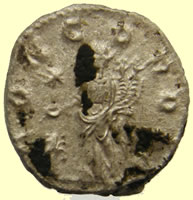 |
|||
Debased silver Roman coin sent for ID - cooking to remove crust
|
|||
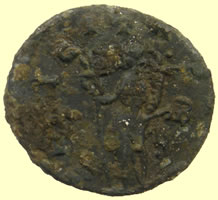 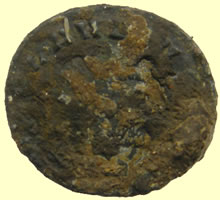 |
|||
Debased silver Roman coin sent for ID - cooking to remove crust
It will probably come as no large surprise that the 2nd - the denarius needing the least cleaning - is Julia Mamaea - you can read a good deal of the legend as-is, the initial "IVLIA" is quite clear. This precise combination of features on the reverse, "CONCORDIA" with Concord standing left, pouring libation from patera over small lighted altar and holding double cornucopiae; star in left field, is unique to her, so far as I have been able to determine in a quick search of the Severan women. Also, the hair style is fairly distinctive, too. Generally the Imperial women each had their own personal style or series of styles and didn't copy each other (except Lucilla who copied her mother, Faustina Jr, with a very round, low-placed bun and otherwise unadorned hair style). The other piece is a bit more problematic, the obverse being essentially illegible at this point - I'll make a wild guess that it may be Julia Paula, Elagabalus' wife - but it's just as likely to be Elagabalus - the couple of legible letters on the obverse might be in either of their common legends. The reverse type is PIETAS AVG with Piety standing facing, head left, right hand extended (holding patera?) and box of incense(?) in left. This is a pretty common type and could have been used by either man or woman (actually, so could CONCORDIA, but that's more commonly a womans' type in the Severan era) We'll have to wait for some encrustation to be removed before I can give you any more conclusive ID's, but if these are from a site close to the one in which yesterday's Severus Alexander was found, it would make sense since all three could easily be dated within less than a decade of each other, overall. Mark |
|||
 |
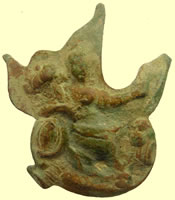 |
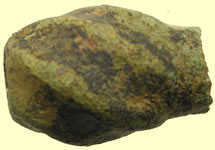 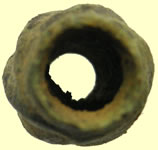 |
|
| 1500-1700 mount with 2 integral lugs | Georgian Britannia mount | Medieval knife pommel | |
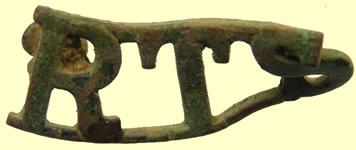 |
 |
||
| WWII Regimental Training Squadron- RAF lapel badge | 2ndC Roman fibular brooch | ||
 |
|||
| Medieval ear wax scraper ? | 1500-1700 mount with 2 integral lugs | ||
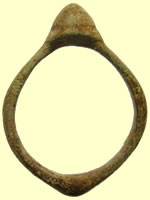  |
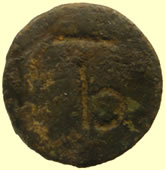 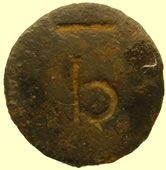 |
||
| Medieval copper thumb ring | Unknown coin weight ? | ||
  |
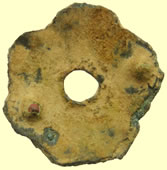 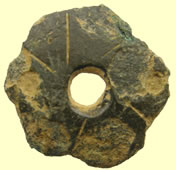 |
||
| Medieval harness hanger | Medieval mount | ||
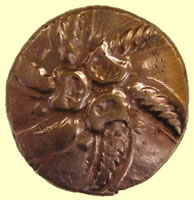 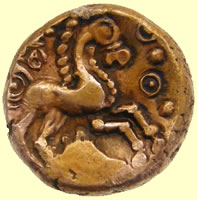 |
|||
Addedomarus 45BC Celtic gold full stater - sent to CCI for recording CCI 13.0532 17.13mm, 5.54g Thanks for the latest pair of Addedomaros staters, the one you sent a few days ago (the very round coin) I've recorded as 13.0532, and yesterdays coin (the oval one) is 13.0533. John |
|||
 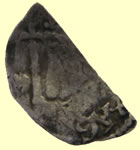 |
|
||
1158 -1189 AD Henry II hammered silver penny ' Tealby' cross and crosslet type Unusual cross - this is a defining characteristic of class C3 |
2 Georgian trade weights | ||
 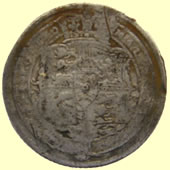 |
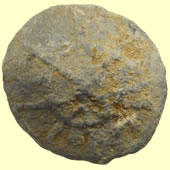 |
 |
|
| 1817 George III milled silver shilling | Medieval boy bishop token | Capt / Commander - 1774-1787 | |
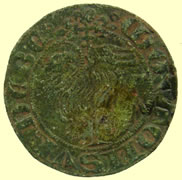 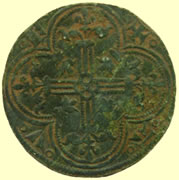 |
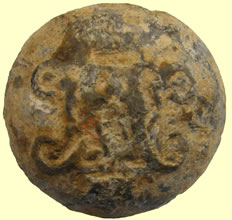 |
||
1373-to 1414 struck by Charles V to VI Paschal lamb jetton of Bourge (Berry) Obv +MOTION SVI: DE BERRI Paschal lamb standing left with one foot raised:head nimbate and reverted to view flag with cross at top Mitch Ref 498 |
19thC Tendering Volunteer Calvary lead mount | ||
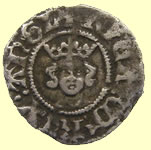 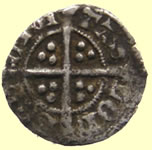 |
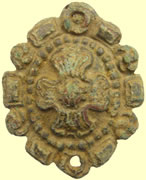 |
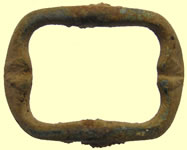 |
|
1377-1399 Richard II hammered silver half penny - Type 1 (L) Obv + RICARD'REX :ANGL Rev CIVI/TAS/LON/DON - London mint
|
Georgian mount | Post-medieval copper-alloy buckle frame C AD 1650-1720 |
|
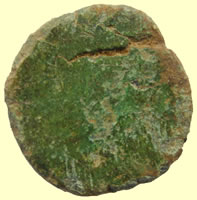 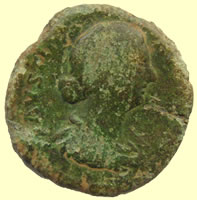 |
|||
| 1stC Roman bronze sent for ID
As I commented just yesterday (wasn't it?), you can generally tell the imperial ladies apart by their individual coifs - except for Faustina Jr. and her daughter Lucilla, both of whom wore their hair pulled back into a very simple bun, low on the back of the head. Faustina Jr. was the wife of Marcus Aurelius. The daughter of Antoninus Pius (and his wife, Faustina Sr.) she married M. Aurelius in 145 while he was Caesar under A. Pius. She was proclaimed "Augusta" in 147 when her first child was born. (she bore at least a dozen children of whose existence we have records) replacing her mother as Augusta - and incidentally achieving this elevation before her husband, who was made Augustus in 161 on the death of A. Pius. She and Marcus Aurelius evidently had a closer and warmer relationship than many we read about among the Roman nobility, despite some rumored infidelities. She joined her husband in the field as he spent the later part of his life repelling attacks along the northern borders. Later in life she was known as "Matri Castrorum", or "Mother of the Camp". (sort of like a fraternity's housemom, I guess...) A MATRI CASTRORVM S - C sestertius of Faustina Jr: A somewhat better-preserved example of a Faustina Jr. sestertius: Unfortunately, at least from what I can see in the photos, I am not going to be able to tell you what the reverse type is on your coin. It's unfortunate that the reverse has been so profoundly degraded by wear and oxidation - but the obverse is quite nice considering the sort of piece I am used to seeing from your digs. Mark |
|||
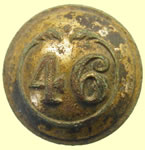 |
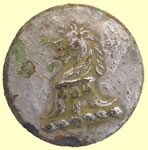 |
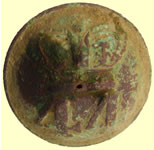 |
|
French Infantry Button
46th Line Regiment Circa 1803-1814
|
19thC liver button | THE 44th REGIMENT OF FOOT. / AFTER 1881 :- 1st Battalion The Essex Regiment
O/R's 1820 - |
|
 |
  |
||
1900- 1907 The City of London Yeomanry (Rough Riders) was a yeomanry regiment of the British Territorial Army, formed in 1901 and amalgamated in 1961 |
Rolled hammered silver penny - annulets in 2 opposing quadrants 1422-27 Henry VI hammered silver penny - annulet issue |
||
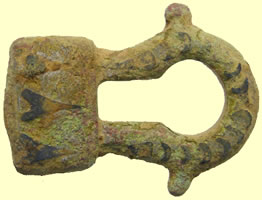 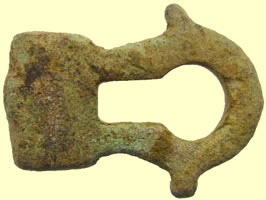 |
|||
| Very early medieval looking buckle chape with black enamel inlay decoration - one for the museum | |||
 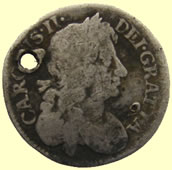 |
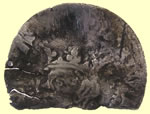 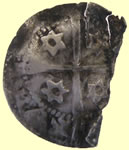 |
||
| 1679 Charles 1st milled silver 4 pence | 1280 - 1286 Scottish Alexander III 2nd coinage Class 1 |
||
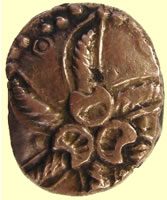 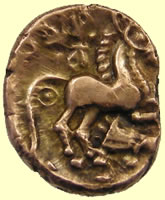 |
|||
Addedomaros 45BC Celtic gold full stater - sent to CCI for recording 18.42mm, 5.53g Thanks for the latest pair of Addedomaros staters, the one you sent a few days ago (the very round coin) I've recorded as 13.0532, and yesterdays coin (the oval one) is 13.0533. John |
|||
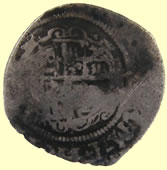 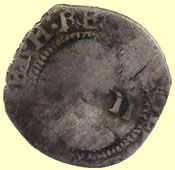 |
 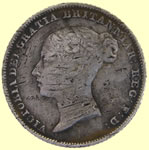 |
||
| 1625 Charles 1st hammered silver half groat | 1851 Victoria milled silver sixpence | ||
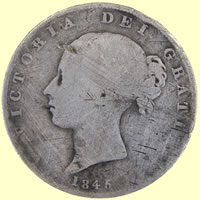 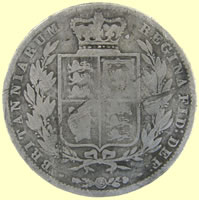 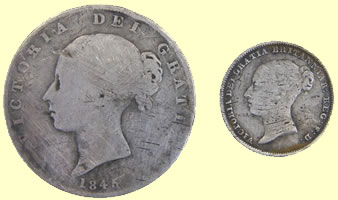 |
|||
| 1845 Victoria milled silver half crown (30 pence) with size comaprison to a sixpence | |||
|
|||
| Medieval silver ring - reported as treasure to museum | |||
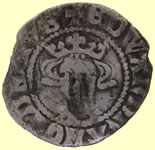 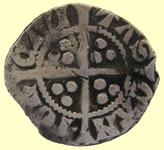 |
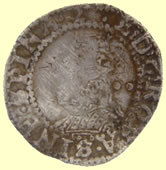 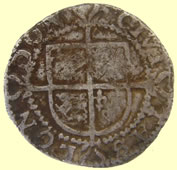 |
||
1272 Edward 1st hammered silver penny - Class 10ab Obv +EDWARD R ANGL DNS HYB Rev CIVI/TAS/CAN/TOR - Canterbury mint |
1602 Elizabeth 1st hammered silver half groat - 2 mint mark | ||
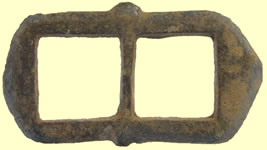 |
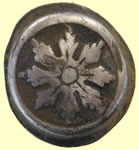 |
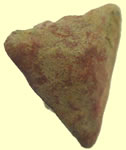 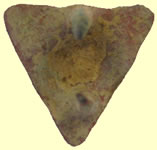 |
|
Post medieval cast copper alloy buckle frame Circa AD 1600 - 1699 |
18thCc silver button | 1500-1700 mount | |
 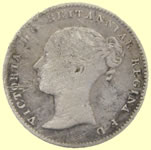 |
 |
 |
|
| 1860 Victoria milled silver 3 pence | 1500-1700 mount | Georgian watch winder | |
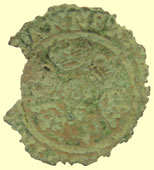 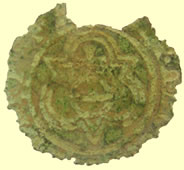 |
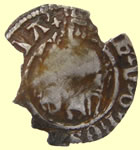 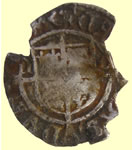 |
||
1586 Hans Krauwincel II Rose orb Jetton HANNS KRAVWINCKEL IN NVRENB |
1509 -47 Henry VIII hammered silver sovereign penny TD besides shield - Bishop Ruthall - Durham mint |
||
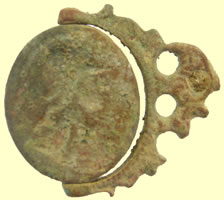 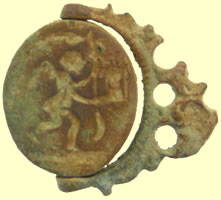 |
|||
| Neat double sided Georgian fob seal | |||
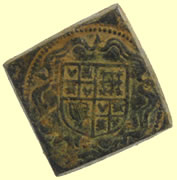 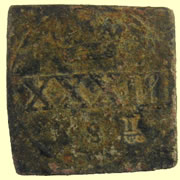 |
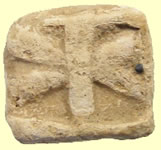 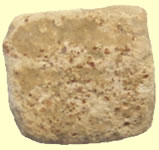 |
||
1604 James 1st Rose ryal gold coin weight, 2nd coinage revalued Rev Crown XXXIII (33 shillings ) |
Saxon lead coin weight | ||
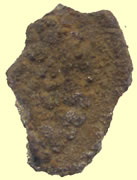 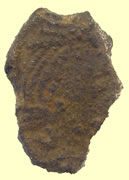 |
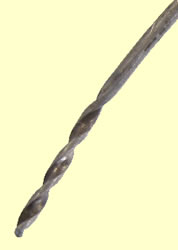 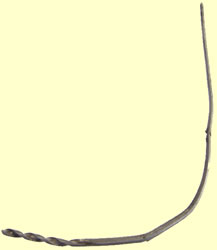 |
||
| Ancient silver coin fragment - cooking to clean up | Silver bracelet fragment - worth the museum taking a look in case it is early | ||
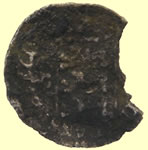  |
 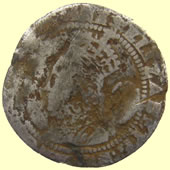 |
||
| 18thC Continental milled silver coin - 3 lions of rev looks Dutch | 1574 Elizabeth 1st hammered silver three pence | ||
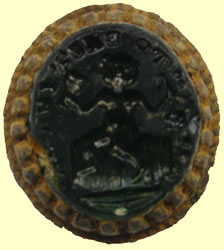 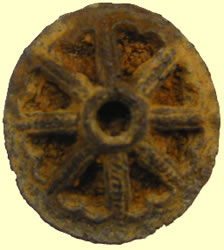 |
|||
Georgian fob seal matrix - 'TO BEST IN HD' Man sitting on beer barrel with glass and grapes in hand |
|||
 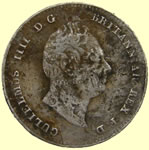 |
 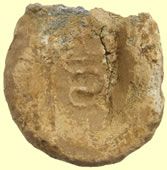 |
||
| 1836 William IV milled silver three ppence | 12th -15thC Pilgrims lead ampullae - East Anglia type |
||
 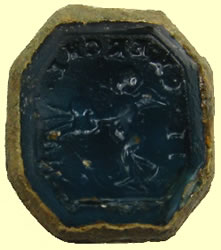 |
|||
Georgian fob seal matrix 'IF CHERCME Winged cherub facing left holding man |
|||
|
 |
||
| Medieval barrel lock | Old Womens Institute - Britain Enamel Badge - W O Lewis Badges Bham'For home and country'' |
||
 |
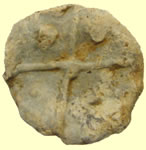 |
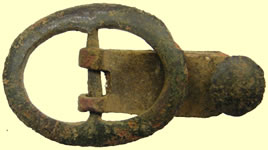 |
|
| 1500-1700 mount | 15thC lead token - type 2 | Cast copper alloy double-looped sub-annular shoe or knee buckle with bevelled internal edge Circa 1650-1720 |
|
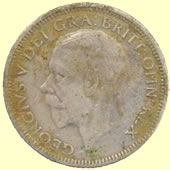  |
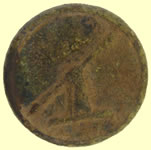 |
 |
|
| 1935 George V milled silver shilling (12 pence) | 19thC livery button | 17thC button | |
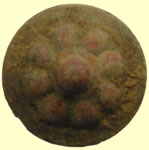 |
 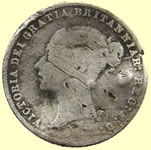 |
||
| Georgian mount | 1859 Victoria milled silver sixpence | ||
Robinson enameled metal 'golden shred' marmalade Gollywog badge Robertson's Post War White Waistcoat Boy Scout Golly Badge by Miller |
|||
Gollywog brandingJust before World War I, John Robertson (son of James Robertson) was on a tour of the United States. Whilst on a visit to the backwoods he noticed many young children playing with little black rag dolls with white eyes, made from their mothers' discarded black skirts and white blouses. Intrigued by the popularity of the "Golly" (the name being the children's interpretation of doll), he thought it would make an ideal mascot and trade mark for the Robertson's range of products. Accepted by the company, Golly was first shown on Robertson literature in 1910, on items such as labels and price lists. Robertson's officially 'retired' Golly in 2002. The company had found that Golly was, on the whole, no longer popular with the children of families, although the scheme was still successful with adult collectors. Robertson's always insisted that they did not retire the Golly because of the pressure of "political correctness" in the 1990s (the caricature is now generally considered to be racist), |
|||
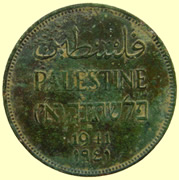 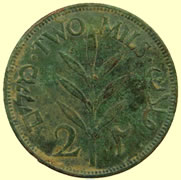 |
 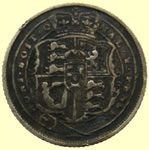 |
||
1941 Palestine 2 mils Inscription PALESTINE, in English, Hebrew and Arabic |
1820 George III milled silver sixpence | ||
 |
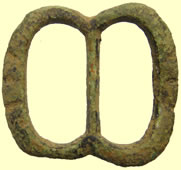 |
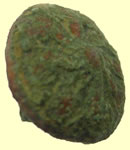 |
 |
| VA Army button ? | Post Medieval cast copper alloy single loop buckle frame. 1500-1650 AD |
16thC Tudor button | Britain's Merchant Navy Generic Design Issue In use 1900 's onwards |
  |
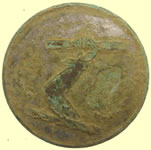 |
 |
|
| 2ndC Roman enamelled fibular brooch | 19thC livery button | 19thC hunting button | |
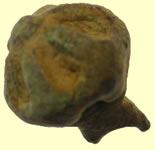 |
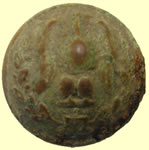 |
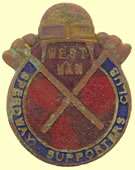 |
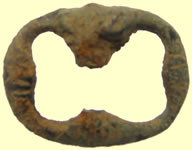 |
| 16thC Tudor fretwork button | 19thC Essex Regiment button | West Ham speedway club badge | Cast copper alloy double-looped sub-annular shoe or knee buckle with bevelled internal edge Circa 1650-1720 |
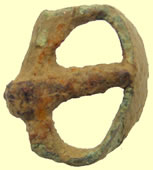 |
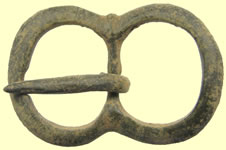 |
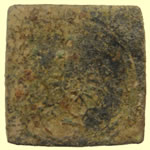 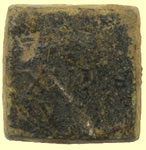 |
|
| Medieval D buckle | Post Medieval cast copper alloy single loop buckle frame. 1500-1650 AD |
1604 James 1st Spur Ryal gold coin coinweight- 2nd coinage, revalued Obv XVIs VID Rev Flower |
|
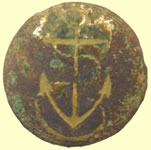 |
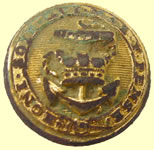 |
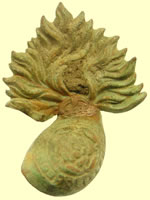 |
|
| Capt / Commander - 1774-1787 | 20thC shipping line navy button - not checked ref books yet Honi soit qui mal y pense (Old French: shame upon him who thinks evil of it)
|
Royal fuseliers cap badge |
|
 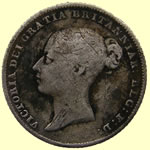 |
 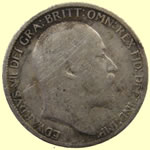 |
||
| 1846 Victoria milled silver sixpence | 1906 Edward VII milled silver sixpence | ||
 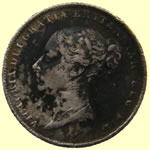 |
 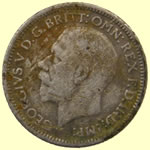 |
||
| 1852 Victoria milled silver sixpence | 1929 George V milled silver sixpence | ||
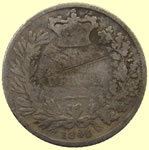 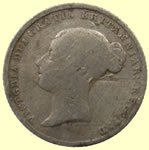 |
  |
||
| 1845 Victoria milled silver sixpence | 1947-8 Winners Waltham & District football league Birmingham solid silver hall mark |
||
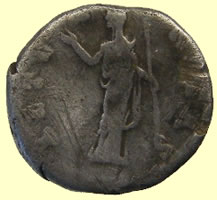 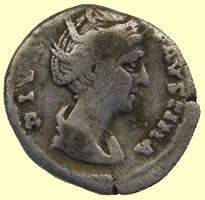 |
|||
2ndC Roman silver coin sent for ID 3.36g, 17.46 mm Chris, Righto - you hardly need my help on one like this, but here goes: This is Faustina the Elder - wife of Antoninus Pius and mother of Faustina the Younger, Marcus Aurelius' wife. The Elder Faustina died in 141, only a couple of years after Antoninus ascended to the purple, so the great bulk of her coinage is posthumous. This denarius, from the mint at Rome, c. 147 or later, has the common AETERNITAS reverse legend which can be found coupled with a dozen or so different reverse types. This one is Juno raising her right hand and holding a scepter. It's considered quite common, overall - but this is a very nice find for your guys! Mark |
|||
|
|||
Stunning complete huge Georgian horse harness bell with 'I' foundry mark Only ever seen fragments of this type before |
|||
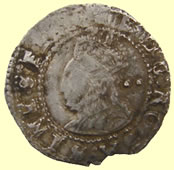 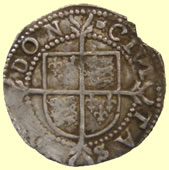 |
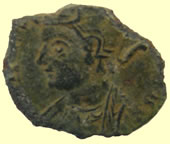 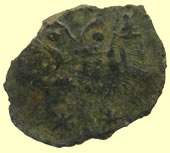 |
||
| 1594-6 Elizabeth 1st hammered silver half groat | 4thC Roman bronze coin sent for ID You're trying to trick me by posting the images upside down now? This is, of course, one of the VRBS ROMA city commemoratives originally issued in conjunction with the ceremonies dedicating Constantinople as the new capital city of the Empire, and then up until the death of Constantine - ie: 330-337. Issued occasionally after Constantine's death, the later ones usually just have the VRBS ROMA obverse, the allegorical personification of Rome as an armored woman, paired with a single-standard GLORIA EXERCITVS, soldiers flanking standard(s) type after the elevation of Constantine's sons in 337. The reverse, if you care to turn it right-side up, shows the she-wolf standing left suckling Romulus and Remus, two stars in the field above and no legend. Usually you can easily tell which city issued these, but the mint mark is completely off-flan on this specimen. Mark |
||
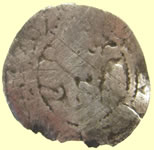 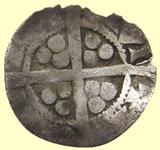 |
  |
||
| 1272 Edward 1st hammered silver penny | 1509- 1547 Henry VIII hammered silver half penny Obv hENRIC DI GRA REX Rev CIVI/TAS/ LO** - London mint |
||
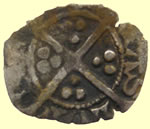 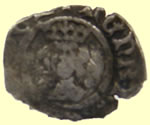 |
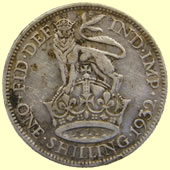 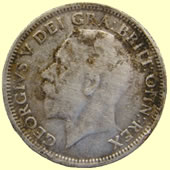 |
||
1413-22 Henry V hammered silver half penny - annulet to right side of neck - Obv hENRI * *** Rev CIVI/TAS/ LON/DON - London mint |
1932 George V milled silver shilling | ||
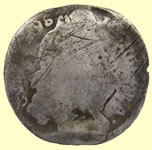 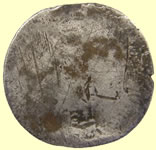 |
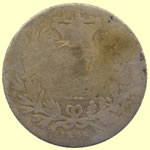 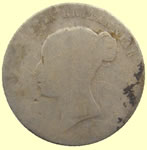 |
||
| 1696 William III milled silver sixpence | 1845 Victoria milled silver sixpence | ||
 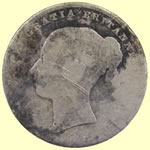 |
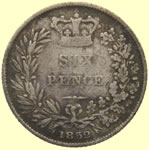 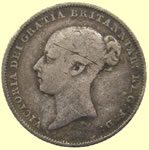 |
||
| 1844 Victoria milled silver sixpence | 1852 Victoria milled silver sixpence | ||
More finds on 2013 Sept Finds page 1 |
|||

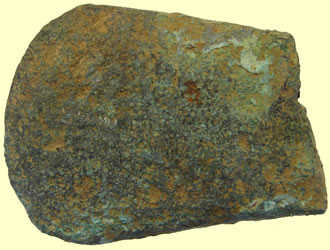
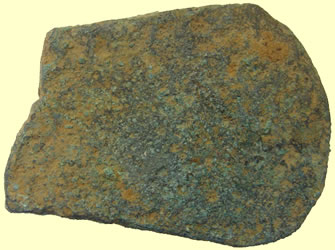







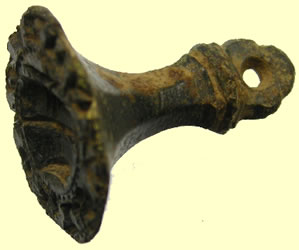
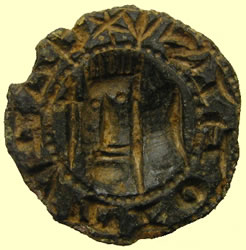
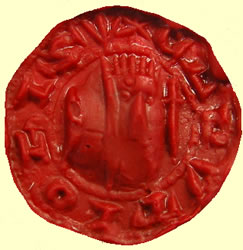
 'A badge for a Knight of the Order of the Holy Sepulchre in bronze and dating somewhere around C13/14th possibly very slightly later . This is a very scarce item and it relates to The Equestrian Order of the Holy Sepulchre of Jerusalem being a Catholic chivalric order of Knighthood that traces its roots to Godfrey of Bouillon, principal leader of the First Crusade. According to reliable sources in the Vatican and Jerusalem, it began in historical reality as a mixed clerical and lay confraternity (association) of pilgrims which gradually grew around the most central of the Christian holy places in the Middle East, the Holy Sepulchre or the tomb of Jesus Christ.This would have been a pin for a member of the order , there is a mark on the reverse where the original pin would have been fixed
'A badge for a Knight of the Order of the Holy Sepulchre in bronze and dating somewhere around C13/14th possibly very slightly later . This is a very scarce item and it relates to The Equestrian Order of the Holy Sepulchre of Jerusalem being a Catholic chivalric order of Knighthood that traces its roots to Godfrey of Bouillon, principal leader of the First Crusade. According to reliable sources in the Vatican and Jerusalem, it began in historical reality as a mixed clerical and lay confraternity (association) of pilgrims which gradually grew around the most central of the Christian holy places in the Middle East, the Holy Sepulchre or the tomb of Jesus Christ.This would have been a pin for a member of the order , there is a mark on the reverse where the original pin would have been fixed 
